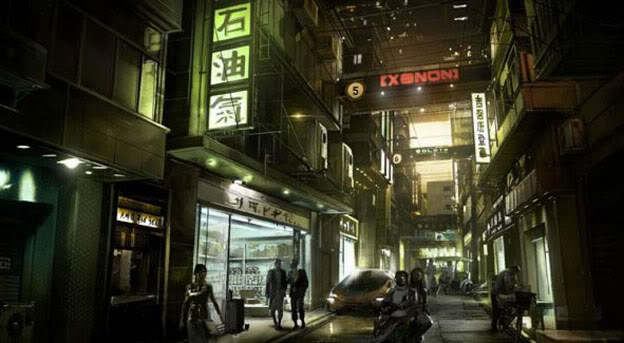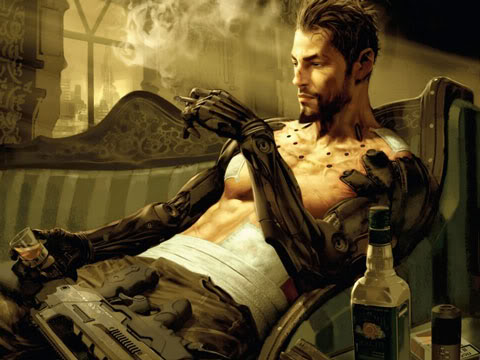This post has not been edited by the GamesBeat staff. Opinions by GamesBeat community writers do not necessarily reflect those of the staff.
In what ways could one use a body that one can repair and augment with mechanical prosthetics? How would people commute to work, were they to live in a vast city located directly below an even larger one? What if corporations became so big and powerful they required their own branch of security? These are some of the questions that went through the head of Jonathan Jacques-Belletête, art director for Deus Ex: Human Revolution.

Deus Ex: Human Revolution Art Director Jonathan Jacques-Belletête (Left)
The virtual light of a cyberpunk city
Imagine waking up to an average Saturday morning and gazing outside your window at the perpetually golden twilight of the city. Mornings are not greeted with the warm blessing of the sun but rather the cold shadow of the floor of the vaster, richer city that resides above you. Trams span this roof — or “floof” as the locals call it — which transport engineers for the purpose of repair. Slums have gone from being buried in the outskirts of a city to being buried below it — out of sight and out of mind.
If any of this sounds familiar to William Gibson fans, it’s because Eidos Montreal has spent an incredible amount of time and hard work to make sure that the locales of Deus Ex: Human Revolution fit the mold of classic cyberpunk aesthetics. If you love films such as Akira, Ghost in the Shell, or Blade Runner, you’re going to feel right at home when you visit the sprawling glow of underground Beijing.

Do humans dream of electric arms?
After one look at Deus Ex’s main character, Adam Jensen, it’s clear that the men and women at Eidos have read their fair share of Philip K. Dick. Since Human Revolution predates the original game, the augmentations of humanity are still constrained to the bulk and heft of cybernetics. “We needed to bring our own flavor to [Deus Ex: Human Revolution],” said Belletête, “and that’s when the idea of cyber renaissance came in: mixing cyberpunk archetypes with renaissance transhumanism.”
The vast onset of knowledge of the 2020 decade shows on every man and woman who has embraced it. Mechanical prosthetics and cybernetic upgrades blatantly show on any who require them…or simply desire them.
The look and feel of a cyber renaissance wasn’t an easy one to pull off, though. “It’s all good to say to my concept artist, ‘Let’s make cyberpunk with a renaissance aesthetic,'” said Belletête, “but they’re all like, ‘What the fuck? How are we gonna do that?’ And, honestly, it looked so stupid at first.” He continues to state that the process wasn’t as easy as finding examples from other sources. "Nobody had ever done this. I couldn't come into the office with a reference from a movie or game and say, 'This is what mixing cyberpunk and the renaissance looks like.' It didn't exist yet. [Our artists] really needed time to get into it and do different iterations. At one point, it started gelling and making sense."

Once you get an up-close glimpse of Human Revolution, you will appreciate the talent that went into its design. That’s easy for me to say since I spoke with the art director, but I also saw a playthrough of a later level of the game. Trust me…if it were possible, I would gladly have this world remembered for me wholesale.
Points for anyone who gets that last reference.
Looking for more E3 news, previews, videos, and analysis? Check out our E3 2011 Coverage Hub.
